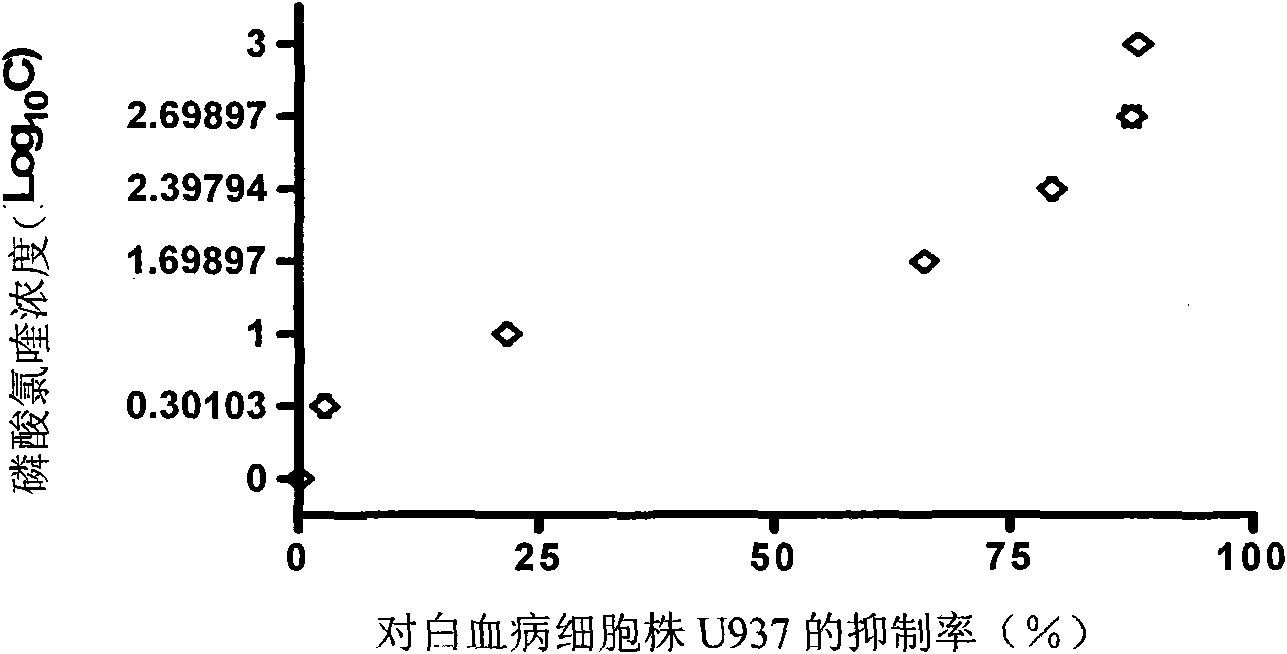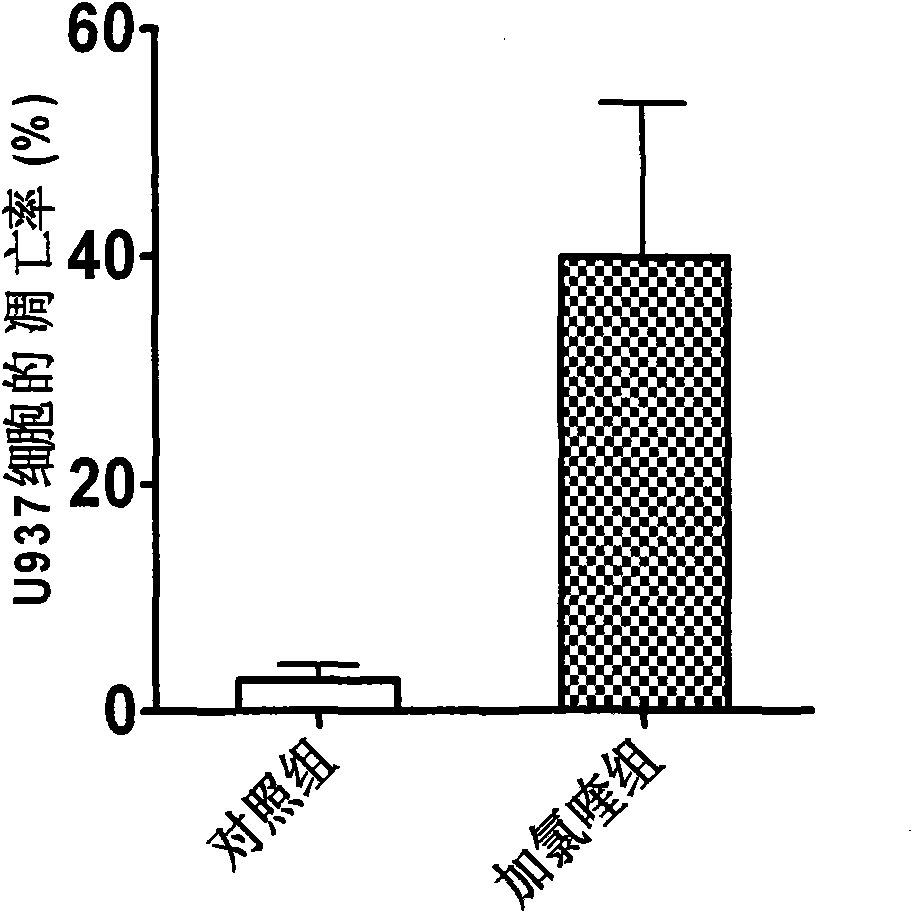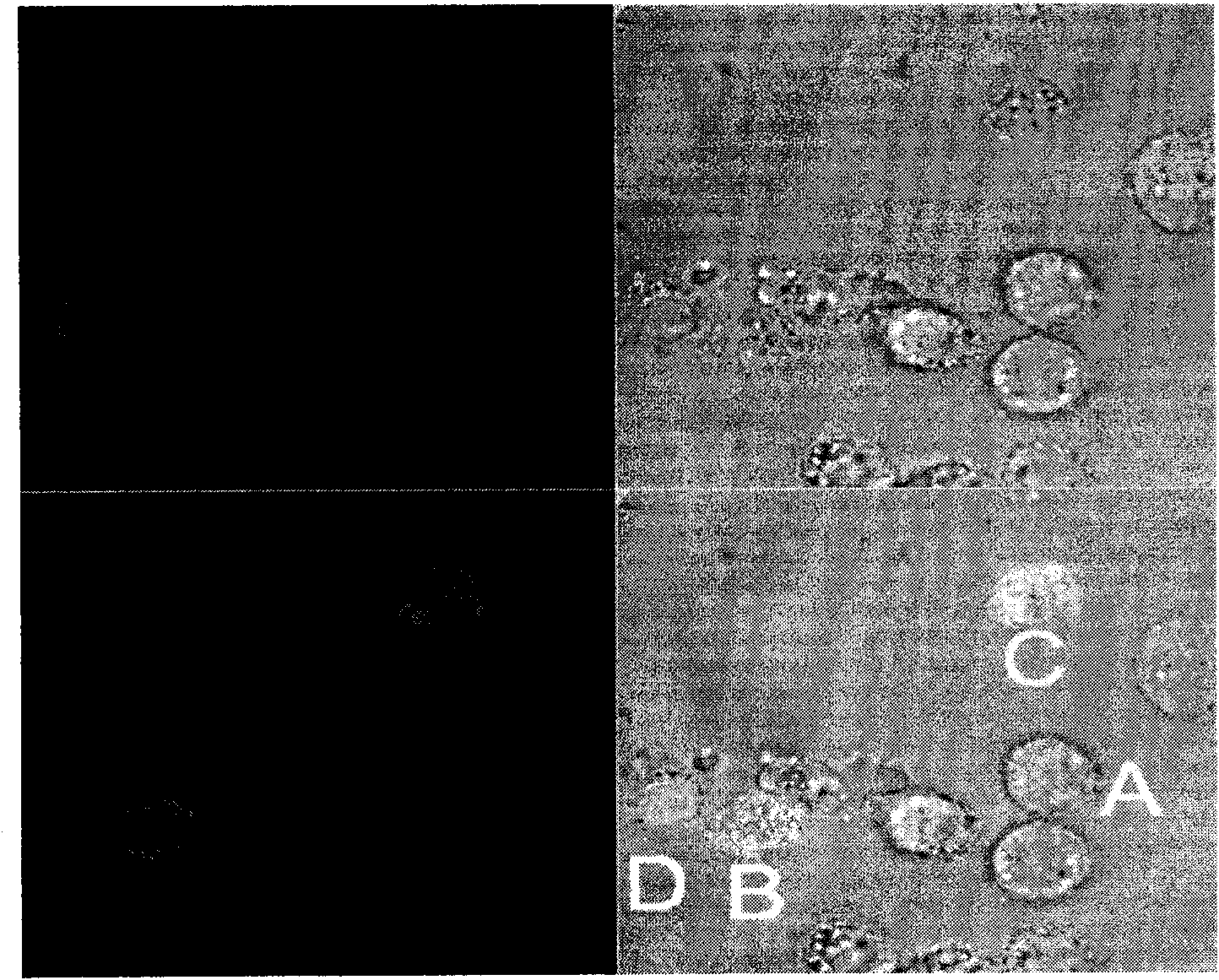Application of chloroquine compound or salt thereof in preparation of medicament for treating acute leukemia
An acute leukemia and compound technology, applied in the field of biomedicine, can solve problems such as poor curative effect, high cost, and large toxicity of chemotherapy
- Summary
- Abstract
- Description
- Claims
- Application Information
AI Technical Summary
Problems solved by technology
Method used
Image
Examples
Embodiment 1
[0022] Example 1: Cell Culture
[0023] The leukemia cell line U937 was provided by Shanghai Institute of Blood. In the RPMI 1640 medium containing 10% fetal bovine serum and 100 u / ml of penicillin and streptomycin, the cells were cultured at 37°C in a cell incubator containing 5% CO2, and subcultured once every 2 days. All experiments were carried out in the logarithmic growth phase of cells.
Embodiment 2
[0024] Embodiment 2: MTT experiment
[0025] Chloroquine phosphate was purchased from Sigma Company, dissolved in normal saline, filtered and sterilized with a 0.22 μm sterile filter, prepared into various concentrations, and stored in the dark. The dry powder of methyl thiazolyl tetrazolium (MTT) was purchased from Sigma Company.
[0026] The cells were adjusted to 2×105 cells / ml, and the control group and the treatment group were divided into two groups. The final concentrations of chloroquine phosphate were 0, 2, 10, 50, 250, and 1000 μg / ml respectively; each group was set with 3 replicate wells. After culturing for 24 hours, add 20 μl of 5% MTT solution to each well, and incubate for 4 hours in a 37-degree incubator. After centrifuging and discarding the supernatant, add 200 μl of dimethyl sulfoxide (DMSO) to each well, shake well to dissolve, and detect 570nm on a microplate reader. Optical density value (D), the average value of 3 replicate wells, the experiment was rep...
Embodiment 3
[0029] Embodiment 3: the study of chloroquine phosphate to the apoptosis effect of leukemia cells
[0030] Annexin V-Alexa Fluor488 / PI apoptosis detection kit was purchased from Invitrogen. U937 cells were cultured for 24 hours after adding 50 μg / ml chloroquine phosphate, and 2×10 5 Cells were washed once with 1×PBS, and resuspended in 200 μl of 1×binding buffer. Add Annexin V-Alexa Fluor4885μl, PI 2μl and incubate in the dark for 15min, and then detect cell apoptosis by flow cytometry and laser confocal microscopy. Repeat the experiment three times.
[0031] After U937 cells were added with 50 μg / ml chloroquine phosphate and cultivated for 24 hours, flow cytometry detected that the percentage of apoptosis in the control group was (2.71±1.35)%, and the percentage of apoptosis in the drug-dosed group was (39.86±13.59)%, P figure 2 ). Visible on the laser confocal microscope image ( image 3 ), quadrant I is the image obtained from the detection of PI, red is the positive cell...
PUM
 Login to View More
Login to View More Abstract
Description
Claims
Application Information
 Login to View More
Login to View More - R&D
- Intellectual Property
- Life Sciences
- Materials
- Tech Scout
- Unparalleled Data Quality
- Higher Quality Content
- 60% Fewer Hallucinations
Browse by: Latest US Patents, China's latest patents, Technical Efficacy Thesaurus, Application Domain, Technology Topic, Popular Technical Reports.
© 2025 PatSnap. All rights reserved.Legal|Privacy policy|Modern Slavery Act Transparency Statement|Sitemap|About US| Contact US: help@patsnap.com



